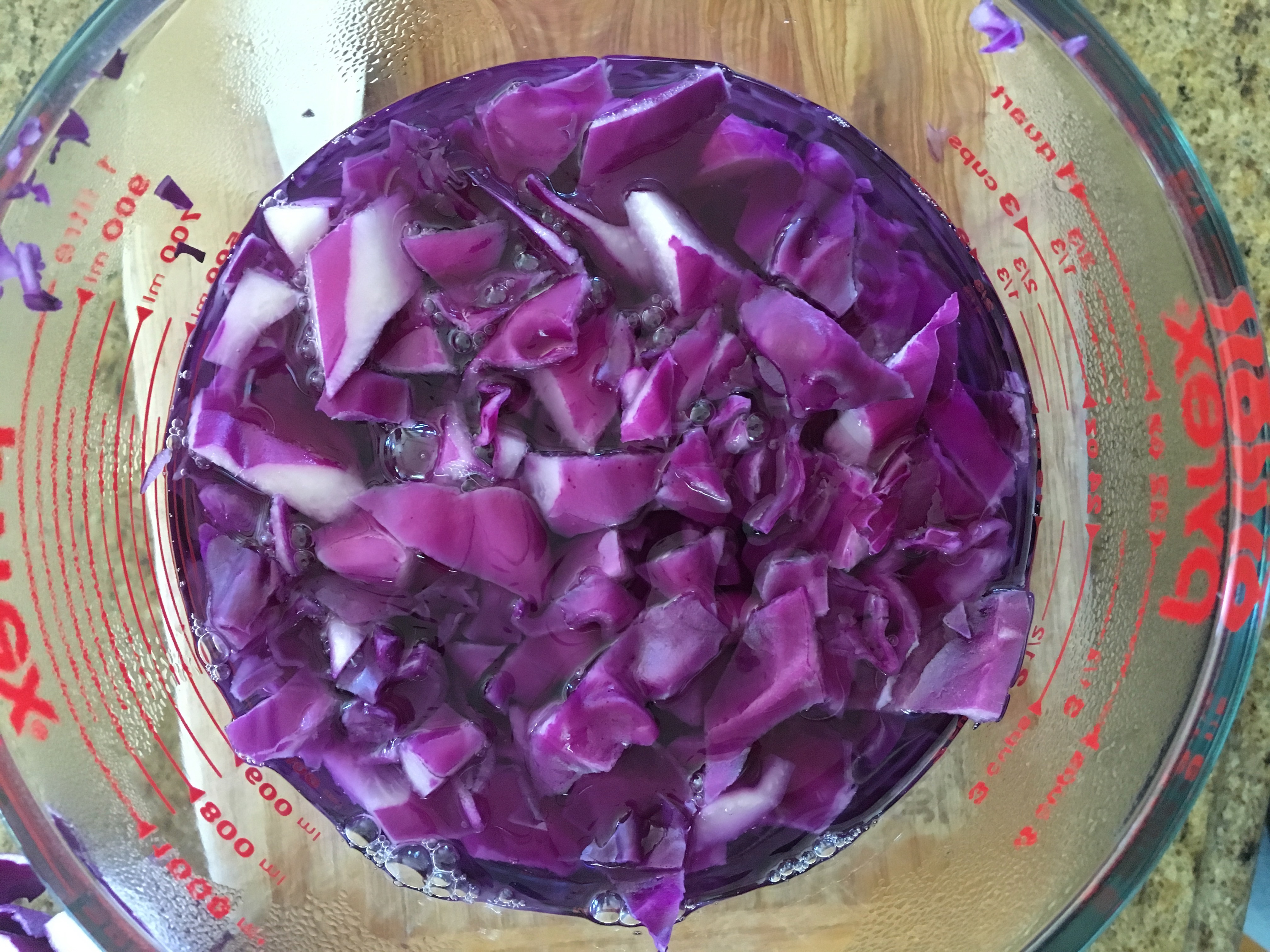
Cabbage Juice pH Indicator
2020-06-20
A homemade solution to tell if something is acidic or basic.
The tool:
pH is a measure of how acidic or basic a substance is. For more information, please check out the minipost on pH. A pH indicator changes color depending on the pH of a substance.
Many purple/blue/red vegetables, including cabbages, have a pigment called anthocyanin that acts as a pH indicator. When an acid is added to boiled cabbage juice, it turns pink to red. When a base is added, the cabbage juice turns blue, green, or yellow.
SAFETY NOTE:
When testing or using your pH indicator, ALWAYS add the acid to the indicator, not the other way around. As in, NEVER pour water or indicator into a container that already has acid in it. Because the reaction heats up, you want to avoid accidentally boiling the acid.
What you'll need:
- Large pot
- Stove
- Water
- Knife
- Cutting board
- ½ purple cabbage
- Heat-resistant container (I like using a large Pyrex measuring cup)
- Timer
- Metal strainer or coffee filter
- Measuring cup
- Vinegar and baking soda (optional for testing)
- Water bottle or plastic wrap for storage
What to do:
- Start boiling water.
- Dice the cabbage and put the pieces into the heat-resistant container.
- When the water boils, pour it over the cabbage until it just covers all the pieces.
- Let soak for 15 minutes.

- Strain the liquid from the cabbage.
- Dilute the purple liquid by adding about the same amount of water. Let the mixture (half cabbage juice, half water) cool. ▲ You can of course choose to dilute it when you use it or change the dilution depending on how deep you want the hue.
- Test the indicator by mixing with both vinegar and baking soda. The former should turn red, the latter green.
- Store covered in the fridge as long as you would store any other juice.